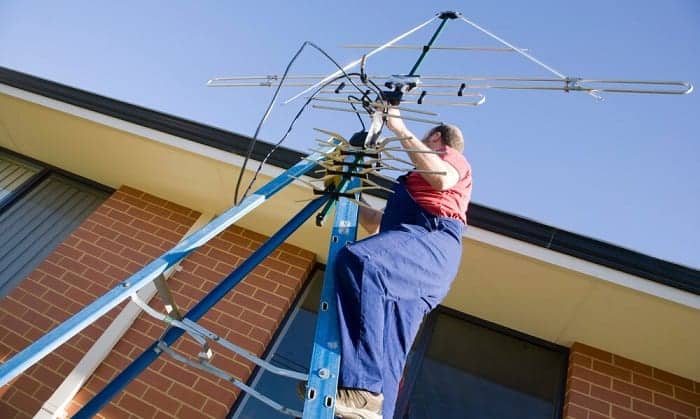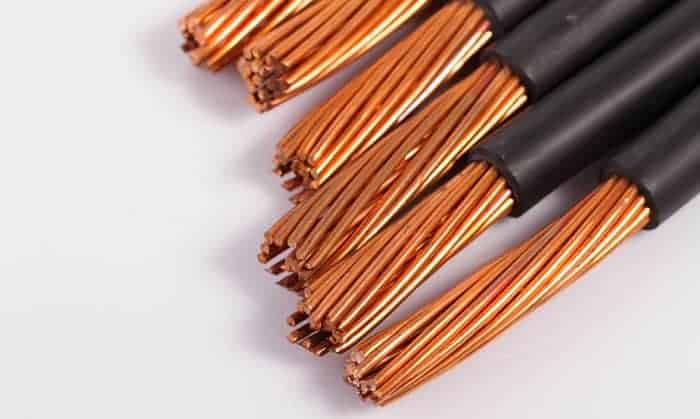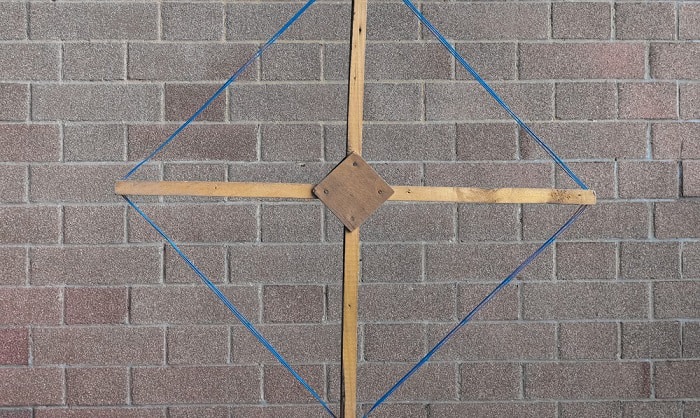It’s not easy to make an antenna for radio if you have no clues in mind to start from scratch. However, once you’ve already grasped a sense of how to make a radio antenna with copper wire (which is the easiest way), you’ll face no significant difficulties DIY-ing one.
If you’re looking for a cost-effective method to spare your tight budget, today’s post will tell you all the steps to make an antenna with copper wire in detail. Stay tuned!
Table of Contents
How to Make a Radio Antenna with Copper Wire (Detailed Instructions)
The dipole antenna, a copper wire antenna featuring two identical posts, is among the most popular models. Utilizing minimal equipment and supplies, even the clumsiest DIYers could effortlessly assemble a dipole antenna.
- First, measure the specifications of your desired antenna. One can quickly estimate the length of their antennas by splitting 143 by the frequencies they want the dipole to adjust to in megahertz. Then, take that number and divide it by 2 for the final results. For instance, if you want an antenna to tune to 88 MHz, split 143 by 88. Then, get the results and cut it in half – this gives you the length, in meters, of every post of your antenna.
- Second, insert the wooden bolts. After calculating the measurements of your antenna, it’s time to take action. One inch away from another, insert 2 wooden bolts into a piece of wood before threading the one tip of each cord around a wooden bolt.
- Third, slip the transformer’s wedge wires beneath the wooden pins, one wire per bolt. When you’re done, fasten the bolts to firmly secure the cables and the spacing plugs of the converter to the wooden board.
- Next, attach the RV-6 cord. You can start with one side of the RG-6 cord to the other tip of the receiver’s aerial socket. A small note at this stage is that every strand of the cable should have a tiny loop twisted onto it.
- Finally, wrap a part of the yarn on each circle and hang the dipole with the ropes.
Why Should We Use Copper Wires for Radio Antennas
Copper has remained the preferred selection for power wiring for almost 200 years. People have constantly utilized this element in electric wires following the introduction of the electromagnetic and the telegraph throughout the early 18th century.
Nowadays, telecommunications and electricity supply, dispersion, and transmission still utilize copper cable wires as their primary wiring element. And here is the reason why:
Because all metals possess specific resistance to electricity waves, they need an energy supply to drive the electricity through. In other words, the lower the impedance degree is, the more electricity a metal possesses. Since copper has high conductivity, it is an excellent material for delivering electricity.
Also, copper is the optimum choice for a base installation or permanently-mounted aerial from a power effectiveness point of view. This is because more messages are accessing via the surroundings, and the inherent impedance of the copper transforms less RF power into heat, reducing the chances of overheating.
Furthermore, this metal also boasts a lower oxidizing potential than most elements. When oxygen and humidity in the atmosphere respond to the exterior of a metal, oxidation occurs. Similar to rust on steel, this event erodes the metal and leaves a film-like coating.
However, copper does not tarnish and instead develops a greenish coating known as copper oxide. Unlike rust, though, this layer shields the metal from additional oxidation while allowing it to conduct electricity as effectively as initially.
In comparison to different elements, copper is also very economical. Indeed, the only more conductive natural material than copper is silver. Yet, making an antenna out of silver isn’t something ordinary people like us could do. You can tell how much a silver antenna would charge.
Copper Vs. Stainless Steel Vs. Aluminum Wire: Which Should You Choose for a Radio Antenna
Copper is indeed the superior transmitter of current and heat of all, apart from valuable elements. Thus, it is not strange that roughly 60% of overall copper consumption is for such applications.
Compared to aluminum and steel’s conductivity, this material is double the aluminum and 6 times more conductive than steel. As a result, copper is undoubtedly the ideal aerial material.
Because of the enhanced electricity delivery performance, a higher percentage of the RF energy will go upward and out of the transmitter rather than being captured and converted to thermal power.
Indeed, a copper antenna provides users with better radiating efficiency than other construction materials, allowing them to operate at higher power levels, which many different elements cannot surpass.
For this reason, nowadays, people no longer go for aluminum cables. Instead, they prefer to use copper ones. Indeed, there is no reason why we shouldn’t use a more energy-efficient option. Moreover, copper also helps to reduce energy consumption on a global level as it generates less heat.
Since stainless steel offers a higher tension rigidity, it allows for the use of thinner thread. As a result, steel is a better pick for portable whip antennas that require a lot of mobility.
However, we wouldn’t recommend this material on a base antenna since it lacks adaptability and has a low electrical conductivity, which reduces overall effectiveness.
Conclusion
That’s everything you need to know regarding how to make a radio antenna with copper wire. As you can tell, the process is pretty straightforward, and no special gear is necessary, meaning no extra purchase and investment.
Follow our steps stated above strictly, and we promise you can make antenna for radio by yourself in no time!
Read more: How do you build a 75 ohm FM antenna?

After four years working as a radio mechanic, I know that everything about radio communication is not breezy, even though it greatly benefits us. That is why I set up a website sharing my skills and guides to help non-professional users use their radio headsets, set up their antennas or choose the right products, etc.




